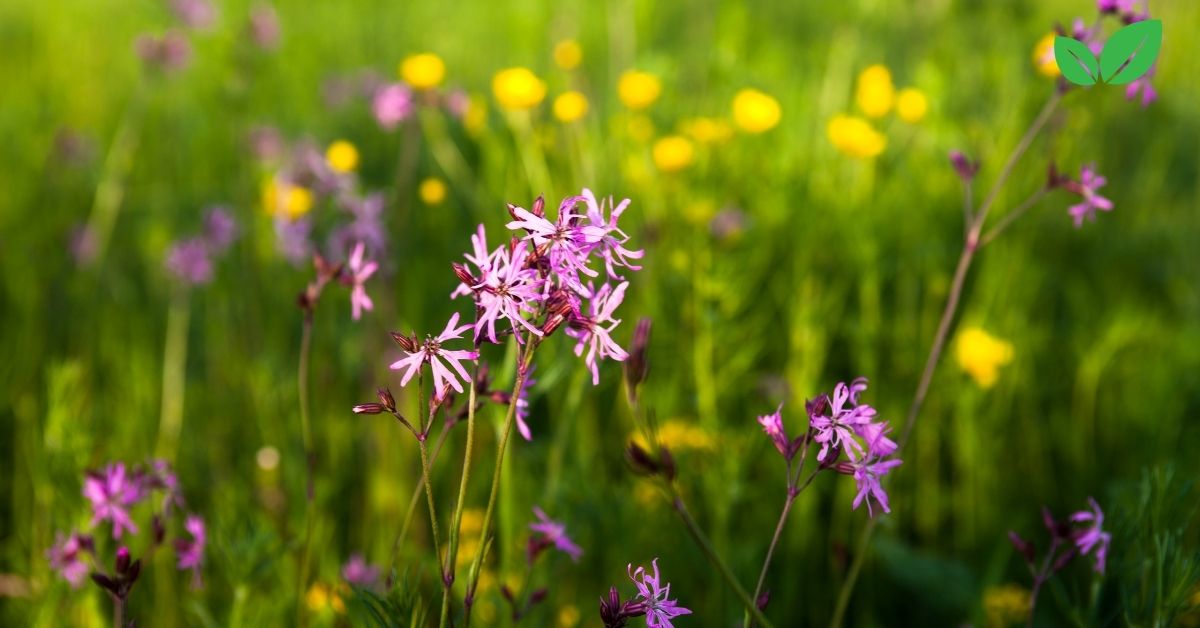Introduction to the Ragged Robin Plant
The Ragged Robin plant (Silene flos-cuculi) is a striking and ecologically significant perennial herb that thrives in wetlands and other moist environments. Its beautiful, pink, star-shaped flowers with finely cut, ragged petals make it an eye-catching addition to the landscapes it inhabits. However, its environmental importance extends far beyond its appearance. This hardy plant contributes significantly to wetland ecosystems, playing a crucial role in supporting biodiversity, stabilizing soils, and promoting the overall health of the environment.
The Ragged Robin plant’s survival in wetland habitats across Europe and parts of Asia is a testament to its adaptability to nutrient-poor and waterlogged soils. In recent years, its populations have faced threats due to habitat loss, climate change, and the encroachment of invasive species. Understanding its environmental niche and ecological value is vital for conservation efforts aimed at protecting wetlands and the species that depend on them.
This article delves into the Ragged Robin plant’s biology, its niche within wetland ecosystems, the benefits it brings to biodiversity, and the threats it faces. It also explores the conservation measures necessary to ensure the survival of this delicate, yet resilient, species.
The Botanical Characteristics of Ragged Robin plant
The ragged Robin plant is a perennial herbaceous plant belonging to the Caryophyllaceae family, which also includes species like campions and carnations. It can grow to a height of 30 to 60 centimeters (12 to 24 inches) and is easily recognizable due to its deeply lobed, pink flowers that give it a “ragged” appearance.
The plant is often found in wet, marshy environments, where it thrives in nutrient-poor soils. Its ability to grow in such conditions has made it a key species in wetland ecosystems, contributing to the overall health and stability of these environments.

Growth Habit and Physical Features
The ragged Robin plant has a slender, upright stem covered with fine hairs. The plant’s leaves are lance-shaped and arranged oppositely along the stem. The basal leaves are somewhat larger, while the upper leaves are smaller and narrower. Its flowers, which bloom from late spring to early summer, are composed of five deeply divided petals that create the characteristic “ragged” look.
The plant’s root system is fibrous, which enables it to anchor firmly in the moist soils of wetlands, preventing soil erosion and helping to stabilize the substrate. This root structure also allows Ragged Robin plant to survive in areas where other plants may struggle to establish themselves due to waterlogged conditions.
Reproductive Strategies and Pollination
Ragged Robin reproduces primarily through seed production, although it can also spread vegetatively via its root system. The flowers of Ragged Robin plant are highly attractive to pollinators, including bees, butterflies, and hoverflies. These insects are drawn to the plant’s bright pink blooms, ensuring that cross-pollination occurs and genetic diversity is maintained within the population.
The plant produces small seeds that are dispersed by both wind and water. This ability to spread across wide areas allows Ragged Robin plant to colonize new wetland habitats, particularly after flooding events or disturbances that create open, wet areas ideal for seed germination.
The Environmental Niche of Ragged Robin plant
The Ragged Robin plant occupies a highly specialized environmental niche. It is most commonly found in wetland habitats, including fens, wet meadows, marshes, and along the edges of rivers and streams. These habitats are typically nutrient-poor, with saturated soils that limit the growth of many plant species. However, Ragged Robin has adapted to thrive in these challenging conditions, making it an important part of the wetland plant community.
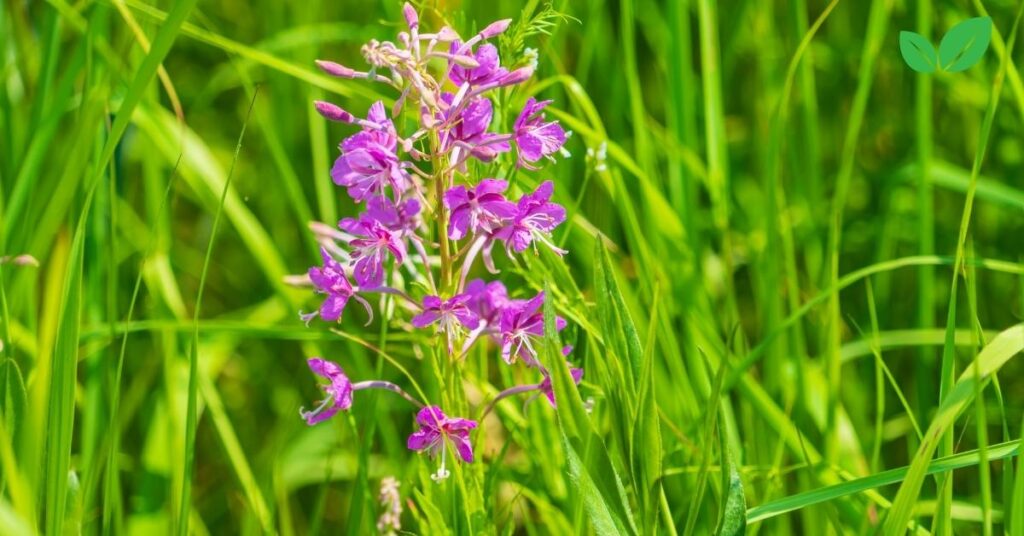
Wetland Ecosystems and the Role of Ragged Robin
Wetlands are among the most biodiverse ecosystems on the planet, providing essential habitat for a wide range of plant and animal species. They are characterized by their water-saturated soils and the presence of specialized vegetation that can tolerate high levels of moisture. Wetlands also serve critical functions in the environment, such as filtering water, storing carbon, and reducing the impact of floods.
Ragged Robin plays an integral role in wetland ecosystems. Its presence contributes to the stability of these habitats by helping to maintain soil structure and reduce erosion. Additionally, Ragged Robin plant supports a diverse range of pollinators and other wildlife, making it a key species for maintaining biodiversity in these environments.
Adaptations to Waterlogged Soils
One of the most notable adaptations of Ragged Robin plant is its ability to survive in waterlogged soils. Many plants cannot tolerate such conditions due to the lack of oxygen in saturated soils, which can suffocate root systems. However, Ragged Robin has developed physiological mechanisms that allow its roots to absorb oxygen efficiently, even in water-saturated environments.
This adaptation enables Ragged Robin plant to thrive in wetland habitats where other plant species may struggle to establish themselves. By occupying this niche, Ragged Robin helps to stabilize the wetland ecosystem and provides a foundation for other species to thrive.
The Ecological Significance of Ragged Robin plant
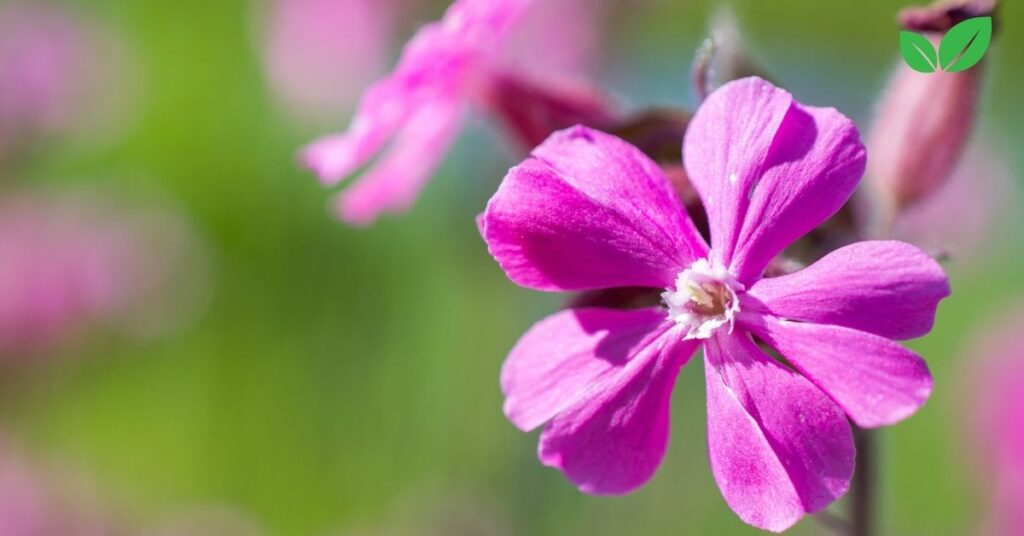
Biodiversity Support
Ragged Robin plant is a valuable contributor to wetland biodiversity. Its flowers are a critical source of nectar and pollen for a variety of insects, including bees, butterflies, and hoverflies. These pollinators play an essential role in the reproduction of many plant species, and by supporting them, Ragged Robin indirectly promotes the overall biodiversity of the ecosystem.
Moreover, Ragged Robin’s presence in wetland habitats benefits other plant species by creating favorable growing conditions. Its root system helps to maintain soil moisture and stability, which can support the growth of other wetland plants that require similar conditions. By fostering a diverse plant community, Ragged Robin contributes to the overall resilience of wetland ecosystems.
Interactions with Wildlife
In addition to supporting pollinators, Ragged Robin interacts with a variety of other wildlife species. Birds, small mammals, and insects all benefit from the plant’s presence in the ecosystem. Birds may use the plant’s seeds as a food source, while small mammals and insects may take shelter among its leaves and stems.
These interactions create a complex web of relationships that contribute to the overall health of the wetland ecosystem. By playing a central role in this web, Ragged Robin plant helps to maintain the balance of species interactions that is necessary for a thriving ecosystem.
Soil Stabilization and Water Retention
Ragged Robin’s fibrous root system is vital for stabilizing the soil in wetland environments. Wetlands are prone to erosion due to their saturated soils and the movement of water through the landscape. The roots of Ragged Robin plant help to anchor the soil in place, reducing erosion and maintaining the structure of the wetland habitat.
In addition to stabilizing the soil, Ragged Robin plant also contributes to water retention in wetlands. Its presence helps to trap moisture in the soil, creating a more stable environment for other plants and wildlife. This water retention is particularly important in times of drought, as it helps to ensure that wetland habitats remain viable even during periods of low rainfall.
Threats to Ragged Robin plant Populations
Despite its adaptability to wetland environments, Ragged Robin plant is not immune to the threats posed by human activities and environmental changes. The loss of wetland habitats, the spread of invasive species, and the effects of climate change all threaten the survival of Ragged Robin populations in the wild.
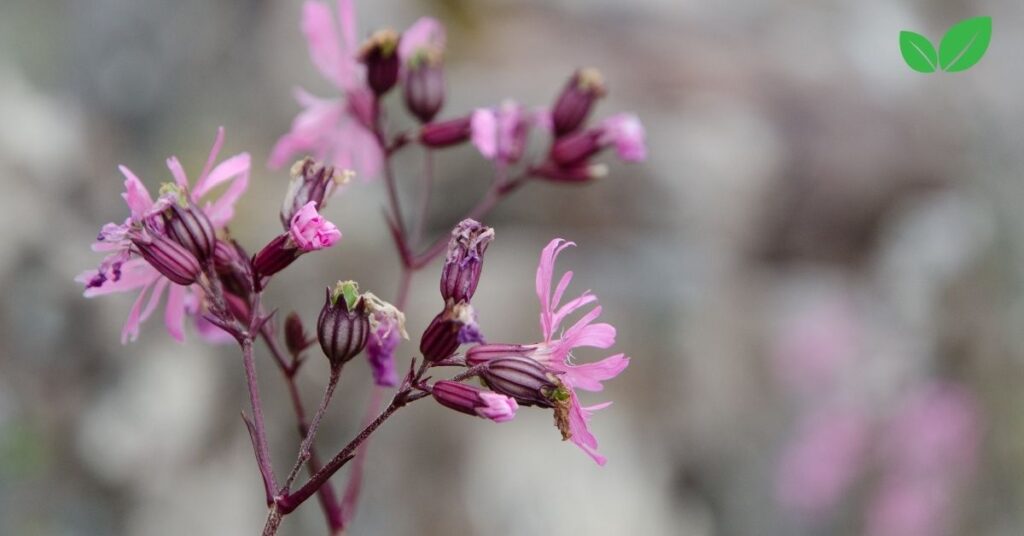
Habitat Loss and Degradation
One of the most significant threats to Ragged Robin is the loss of wetland habitats due to human activities such as agriculture, urban development, and the drainage of wetlands. As wetlands are drained or converted to other uses, the habitats that Ragged Robin plant depends on are destroyed, leading to declines in population numbers.
In addition to outright habitat destruction, the degradation of wetland ecosystems through pollution, nutrient runoff, and changes in water flow can also have a negative impact on Ragged Robin populations. For example, the use of fertilizers in agriculture can lead to nutrient pollution in wetlands, altering the balance of species and making the habitat less suitable for plants like Ragged Robin plant.
Climate Change
Climate change poses a significant threat to wetland ecosystems and the species that depend on them, including Ragged Robin plant . Changes in temperature and precipitation patterns can alter the hydrology of wetlands, leading to droughts, changes in water levels, and shifts in plant communities.
Ragged Robin is particularly vulnerable to changes in water availability, as it relies on consistently moist soils to survive. Prolonged droughts or changes in water flow could reduce the availability of suitable habitat for the Ragged Robin plant, leading to population declines.
Invasive Species
The spread of invasive species is another major threat to Ragged Robin populations. Invasive plants can outcompete native species for resources such as light, water, and nutrients, leading to a reduction in biodiversity. In some cases, invasive plants can alter the structure and function of wetland ecosystems, making them less hospitable to native species like Ragged Robin plan.
Invasive species can also disrupt the interactions between Ragged Robin and the wildlife that depend on it. For example, if invasive plants outcompete Ragged Robin for pollinators, the plant’s reproductive success could be compromised, leading to declines in population numbers.
Conservation Efforts for Ragged Robin
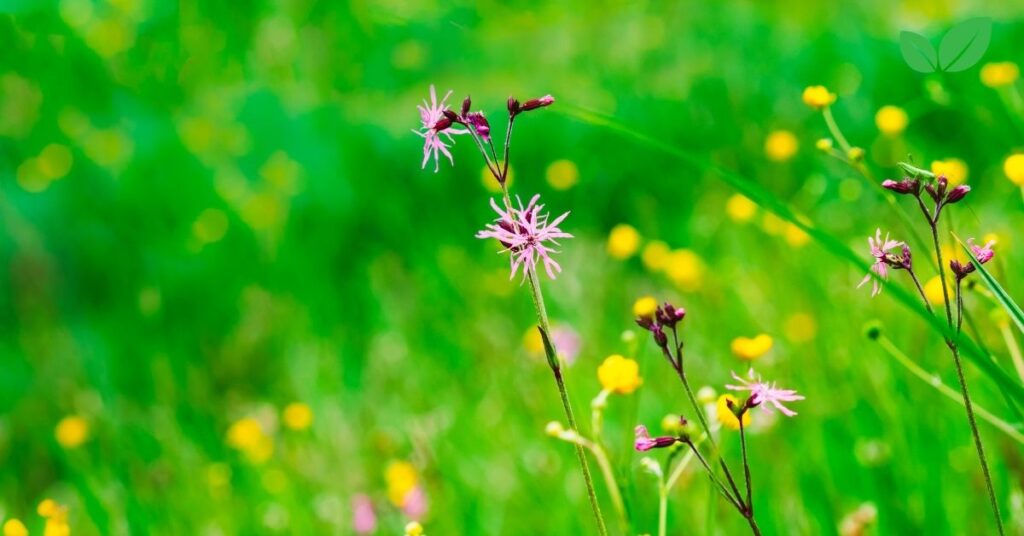
Habitat Protection and Restoration
Conserving Ragged Robin requires the protection and restoration of wetland habitats. This includes safeguarding existing wetlands through legal protections, such as the designation of protected areas, as well as restoring degraded wetlands through techniques like re-wetting, invasive species removal, and replanting native vegetation.
In some areas, conservation organizations are working to reintroduce Ragged Robin to habitats where it has been lost. These reintroduction efforts involve collecting seeds from healthy populations and planting them in suitable habitats, where they can establish new populations and contribute to the restoration of the wetland ecosystem.
Sustainable Land Management
Promoting sustainable land management practices is another important strategy for conserving Ragged Robin and the wetland ecosystems it inhabits. Farmers, landowners, and local communities can play a critical role in preserving these habitats by adopting practices that minimize environmental impacts. For example, reducing the use of fertilizers and pesticides can help prevent nutrient pollution in nearby wetlands, which is crucial for maintaining the delicate balance of species that thrive in nutrient-poor conditions like Ragged Robin.
Landowners can also help by maintaining buffer zones around wetlands, allowing natural vegetation to grow and preventing runoff from reaching these sensitive habitats. By collaborating with environmental organizations and governmental bodies, they can implement wetland-friendly farming and land-use practices that support biodiversity and ensure the survival of species like Ragged Robin.
Furthermore, managing water resources to maintain stable hydrological conditions is essential for the preservation of wetlands. Dams, drainage systems, and other water management infrastructures should be designed in a way that sustains the natural water flow, ensuring that wetlands retain the necessary moisture levels for Ragged Robin and other wetland plants to flourish.
Public Awareness and Engagement
Raising public awareness about the importance of wetland ecosystems and species like Ragged Robin is a key aspect of conservation efforts. Educating the public about the environmental benefits of wetlands—such as flood control, water purification, and carbon storage—can inspire communities to take action in protecting these valuable habitats.
Public engagement programs can be particularly effective in fostering a sense of stewardship among local communities. Wetland restoration projects, citizen science initiatives, and educational campaigns can all play a role in raising awareness and motivating individuals to contribute to conservation efforts. For example, people can participate in planting native species like Ragged Robin in gardens, parks, and restoration sites, helping to create habitats that support pollinators and other wildlife.
Botanical gardens, nature reserves, and schools can also introduce educational programs focused on the ecological importance of wetland plants. These programs can highlight the role of species like Ragged Robin in sustaining biodiversity and promoting ecosystem resilience, ultimately fostering a greater appreciation for the conservation of these habitats.
Policy and Legal Protections
Governments play a pivotal role in the conservation of species like Ragged Robin through the creation and enforcement of environmental regulations. Wetlands are often protected under national and international conservation frameworks, such as the Ramsar Convention on Wetlands, which aims to safeguard wetlands of international importance. By designating wetland areas as protected sites, governments can help prevent further habitat loss and degradation.
Additionally, legal frameworks that regulate land use, water management, and pollution control can help mitigate the threats faced by wetland ecosystems. Environmental policies should prioritize the preservation of wetland habitats and enforce measures to restore degraded ecosystems. For example, regulations that limit wetland drainage for agricultural or urban development can help maintain the natural habitats needed by Ragged Robin and other wetland species.
Financial incentives, such as grants or tax benefits, can also encourage landowners to engage in conservation-friendly practices, including wetland restoration and the protection of natural watercourses. By aligning economic policies with environmental conservation, governments can create an environment where the protection of species like Ragged Robin becomes a priority for both private landowners and public institutions.
The Importance of Ragged Robin in Climate Change Mitigation
While wetlands are often overlooked in discussions about climate change, they play a critical role in mitigating its impacts. Wetlands are some of the most effective carbon sinks on the planet, capturing and storing carbon dioxide (CO2) through the process of photosynthesis. As plants like Ragged Robin grow, they absorb CO2 from the atmosphere and store it in their biomass. When these plants die and decompose, much of the carbon remains trapped in the soil, reducing the amount of greenhouse gases in the atmosphere.
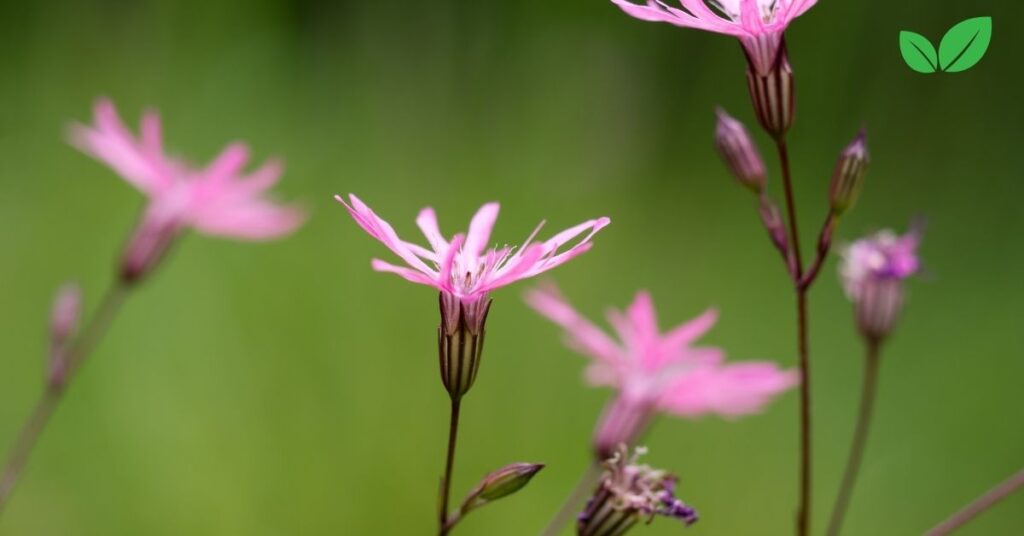
The preservation of wetlands and the species that inhabit them, like Ragged Robin, is therefore essential for global climate change mitigation efforts. Restoring degraded wetlands not only helps to preserve biodiversity but also enhances the ability of these ecosystems to sequester carbon. Wetlands also provide other climate-related benefits, such as regulating water cycles, buffering against storms and floods, and reducing the risks of droughts by retaining water in the landscape.
In the context of a changing climate, protecting species like Ragged Robin becomes even more urgent. As temperatures rise and precipitation patterns become more erratic, wetland ecosystems will need to be resilient enough to adapt to these changes. Ensuring the health of wetland plants like Ragged Robin, which are integral to the ecosystem’s overall function, is a crucial step in building this resilience.
The Future of Ragged Robin plant: A Conservation Success Story?
Looking ahead, the future of Ragged Robin will depend on our ability to address the environmental threats it faces and implement effective conservation measures. While the plant is currently considered of least concern by the International Union for Conservation of Nature (IUCN), its reliance on wetland habitats makes it vulnerable to habitat loss, climate change, and invasive species. However, through a combination of habitat protection, sustainable land management, and public engagement, Ragged Robin could serve as a conservation success story.
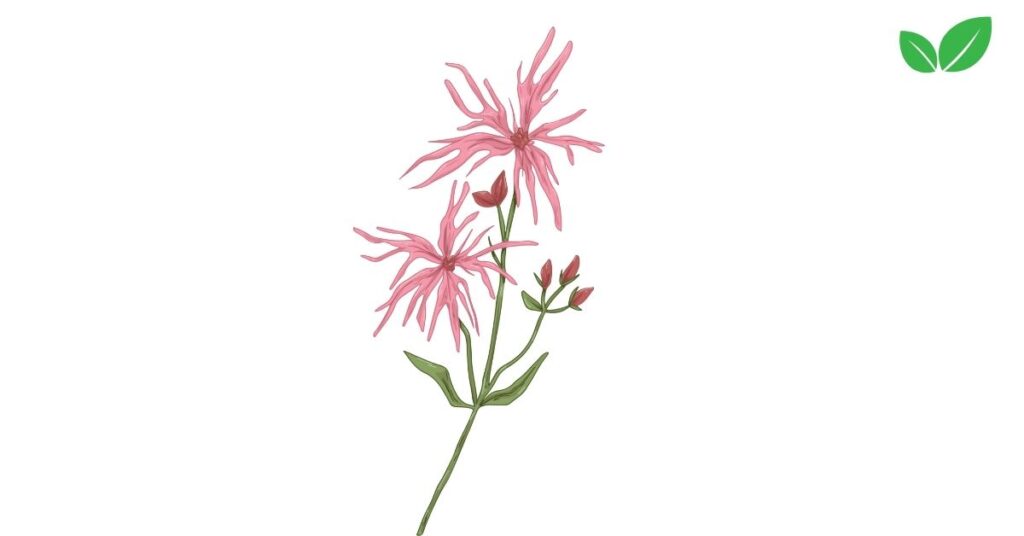
In recent years, there have been encouraging efforts to restore wetlands and reintroduce species like Ragged Robin to areas where they have been lost. These initiatives are showing positive results, with Ragged Robin populations stabilizing or even increasing in some restored habitats. Such efforts highlight the potential for conservation programs to reverse the decline of species dependent on fragile ecosystems.
Furthermore, the growing recognition of the role that wetlands play in addressing climate change, flood mitigation, and water quality has spurred renewed interest in protecting these ecosystems. As awareness of the benefits of wetlands increases, so too does the potential for long-term conservation strategies that will benefit both Ragged Robin and the broader environment.
Conclusion
The Ragged Robin plant may appear delicate with its ragged pink flowers, but its importance to wetland ecosystems is profound. It thrives in waterlogged soils, supports pollinators and wildlife, stabilizes soil, and contributes to the overall health of the environment. Its presence in wetlands signifies a thriving ecosystem, where biodiversity flourishes and essential ecological functions are maintained.
However, like many species that rely on wetland habitats, Ragged Robin faces significant challenges. Habitat loss, climate change, and invasive species threaten its populations, and conservation efforts are necessary to ensure its survival. By protecting and restoring wetlands, promoting sustainable land management practices, and raising public awareness, we can safeguard the future of Ragged Robin and the ecosystems it helps sustain.
In a rapidly changing world, the Ragged Robin plant serves as both a symbol of the fragility of wetlands and a reminder of the resilience of nature when given the opportunity to thrive. Its story underscores the importance of taking action to protect biodiversity and the ecosystems upon which we all depend. With dedicated conservation efforts, Ragged Robin can continue to bloom in wetlands for generations to come.
Read More: Albizia julibrissin: Ecological Niche and Environmental Impact of the Silk Tree

